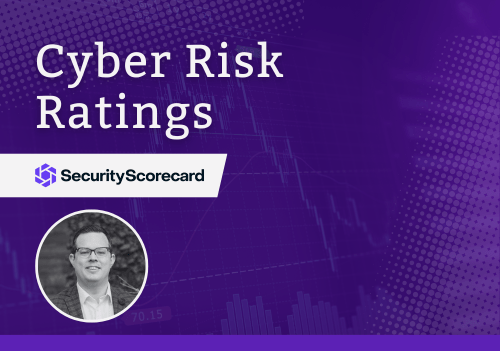In our most recent masterclass on Cyber Risk Ratings held by Andrew Correll in partnership with Security Scorecard, we covered a breadth of crucial aspects to enhance the understanding and application of this powerful tool to the every-day work of cyber insurance professionals. Whether you are a broker looking to elevate sales skills and value-added services, an underwriter aiming to refine risk evaluations and post-binding strategies, or a claims professional seeking to better assess and prepare for secondary claims, this masterclass was tailored to provide valuable takeaways for everyone in the cyber policy value chain.
What are they?
Cyber risk scores serve as a standardized measure of an organization’s cybersecurity posture. These ratings serve as a universal metric, enabling various stakeholders to gauge the potential cyber risk an organization poses. These ratings typically range from A to F, where A indicates minimal risk and F denotes a high risk of experiencing a cyber breach. Cyber risk ratings allow businesses to understand their own cybersecurity risks and help underwriters evaluate the likelihood of a cyber breach or event. This standardized information is crucial for making informed decisions and managing cyber risks effectively.
Advantages of Cyber Risk Ratings
There are many advantages to using cyber risk ratings and it is a testament to the benefits of advancing technology. These tools provide actionable insights that enable insurers to advise clients on necessary security improvements. So by offering detailed cyber risk assessments and proactive risk management strategies, insurers can strengthen client relationships and improve retention rates. Advancements in technology and data analytics can transform various aspects of insurance operations, from client acquisition and risk assessment to portfolio management and proactive risk mitigation. Adopting these tools and strategies can potentially differentiate insurance professionals in a competitive market while improving overall risk management.
This masterclass bridged theoretical cyber terminology with practical applications in policy lifecycle management. It’s clear that brokers can leverage their clients’ ratings for targeted prospecting and value-added services, while underwriters benefit from enhanced risk assessment capabilities to evaluate and improve insurance effectiveness. This underscores the importance of moving beyond checkbox exercises in policy proposals, emphasizing proactive cyber hygiene practices enabled by advanced analytics and data-driven insights. You can watch Andrew’s full insights via our on-demand recording.







